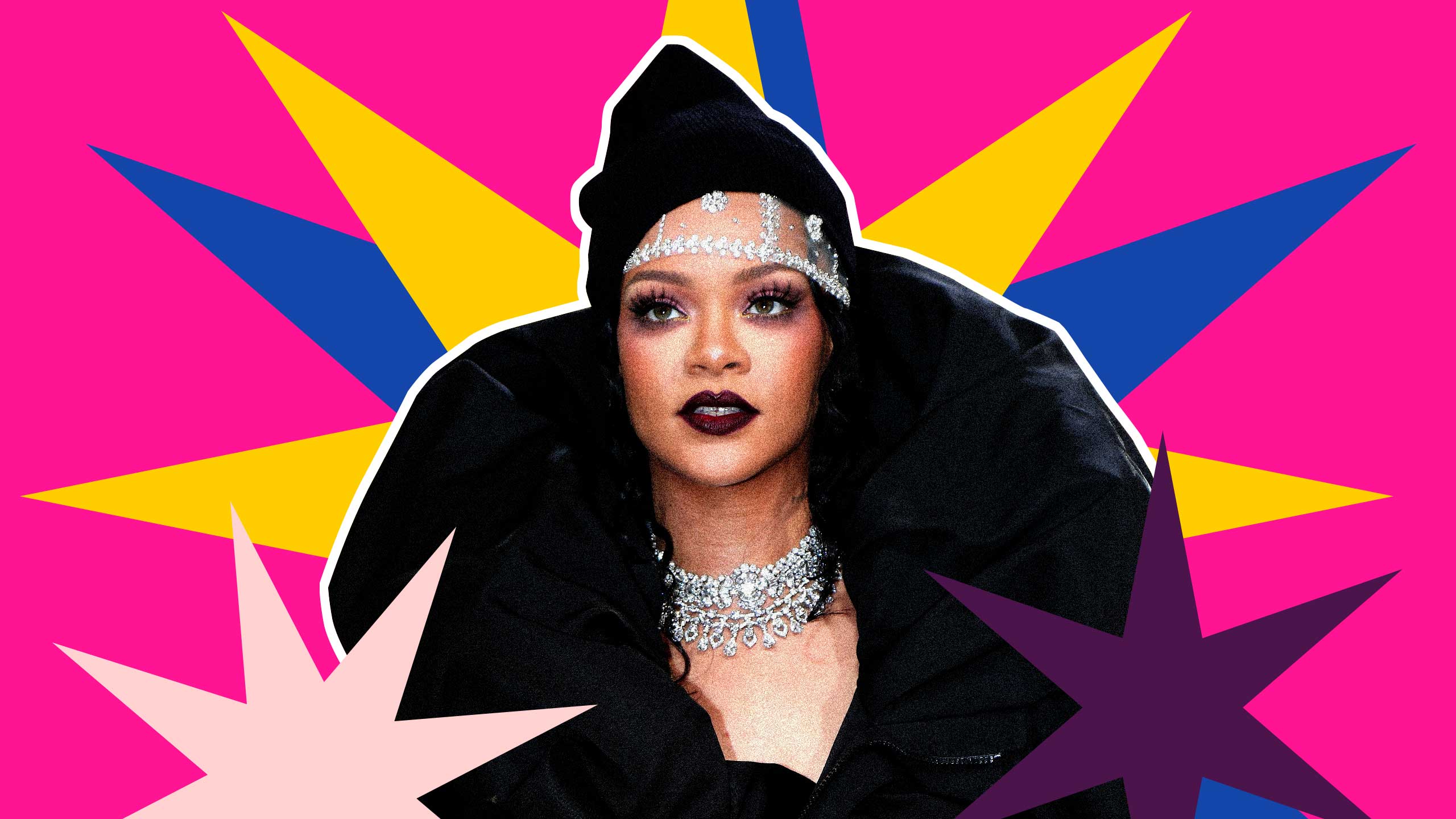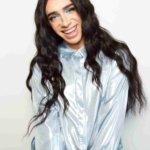Newly minted billionaire and pop icon Rihanna launched volume three of her Savage X Fenty Show on Amazon Prime this past Friday. Featuring an all-star lineup of models and performers—including Normani, Ricky Martin, Nas and Erykah Badu, to name a small handful— the immersive, multimedia fashion show blurs the line between art and commerce. The show is a big budget kaleidoscopic extravaganza that celebrates the sensuality of all shapes, sizes, identities and races. While it is dazzling, who is it really for? Does it exist merely to sell clothes or is there something deeper on offer? Wouldn’t we all prefer to just have some new music from Rihanna?

Credit: Jimmi Francoeur/CBC; Brian Wong/Xtra
Thomas: I adore Rihanna. I know this is a line that not many people are willing to cross, but I think she is underrated as a musical artist. That run of hits between 2006 and 2016 was one of the most impressive of all time; last year, she surpassed The Beatles and Jay-Z to become only the 10th artist with 50 Top 40 hits (she’s had 51). I like how, in a way, she’s the anti-Beyoncé: unapologetically imperfect and intentionally grimy.
I’ve been interested in her pivot to fashion since her Fenty x Puma sportswear collaboration. At some point, she even had a deal with LVMH for her own fashion brand, even though her focus is now mostly on lingerie.
The Savage X Fenty Show is as much a sensual fantasy as it is a corporate one, and that’s why it has fascinated me since its inception in 2019. Take the world’s worst, yet perhaps most ubiquitous brand, synonymous with terrible labour and environmental practices—Amazon—and pair it with the global pop icon and cultural behemoth that is Rihanna. Match the two not only to create a buzzy digital spectacle, but also to sell so-so lingerie to Gen Zs and millennials around the world. Here, fashion is not the point; the point is the capitalistic celebration of inclusion and diversity. I may sound harsh, but it works—I impulse-bought this apple green jockstrap the minute I was made aware of its existence!
Tranna: This is the first Savage X Fenty Show I’ve watched. And I’m a bit speechless! It was stunning but also so stupid? The group dance number, where all the dancers were in red, dancing to Busta Rhymes’ “Touch It” was seriously jaw-dropping. The choreography throughout the show is honestly incredible—I was genuinely blown away.
Thomas: It’s worth noting that the whole show was set inside and outside the Westin Bonaventure, a brutalist complex in Downtown Los Angeles. The sizzling editing of drone shots flying inside the hotel atrium was pretty cool.
Tranna: The interludes of the various models, like Gigi Hadid, being sexy in an elevator were so cliché and pointless. Even the opening with Cindy Crawford, which I guess was supposed to be this OMG moment, kind of fell flat—I think that’s partly because the green nightgown Cindy was wearing was so underwhelming.
Thomas: Underwhelming? The tailoring on this high-stilt gown was so bad it looked like a design challenge gone wrong on RuPaul’s Drag Race.
Tranna: I was trying to be nice!
Thomas: Maybe I’m saying this because I’ve looked at too many fashion posts by Evan Ross Katz on Instagram, but the styling was my least favourite part of the Savage X Fenty Show. I adore Rihanna, but a designer she is not. I’ll give it to her that she has a great creative vision and that it’s been mostly exciting to watch her go from radio princess to retail mogul. But it just feels like the more she takes on, the less interesting the output has become. Anyways, the Savage X Fenty Show is not about art or even fashion: it’s about PR and e-commerce! And in today’s fragmented culture, booking A-listers to parade in underwear is apparently how you create buzz on the internet.
“Daddy Ricky can get it, but he was wearing too much clothing for a lingerie fashion show.”
Tranna: The number of superstars in the show was pretty astounding. I think the most surprising was Ricky Martin. His performance was cute but nothing amazing.
Thomas: Daddy Ricky can get it, but he was wearing too much clothing for a lingerie fashion show and the number was a meh! for me as well. The catwalk and choreography moment to remixes of his biggest hits (“Maria!” “Livin’ La Vida Loca!” “La Copa De la Vida!”) before his performance was actually better than his live song.
Tranna: I was so excited that Erykah Badu was in the lineup but she didn’t perform, she just did a little walk. Madonna’s daughter, Lourdes Leon, was also featured as a model. She is everywhere these days—Marc Jacobs’ campaign, the Met Gala, even the cover of Vogue’s September issue. It’s weird to see Lourdes all grown up. She has a dark energy, just like her mama.
Thomas: The casting is clearly where this endeavour excels. The Savage X Fenty Show was the nail in the coffin of the now defunct Victoria’s Secret TV special: that’s why it was so symbolic to watch 2000’s Brazilian supermodel and notorious Angel Adriana Lima, now 40, serve it in this special (in an elevator, nonetheless). Sidenote: I always wondered who Victoria’s Secret was really for. Average straight men who are probably not that into supermodels and expensive lingerie? Women who rightfully eye-rolled at the whole Angels gimmick? Or the mean gays who helped put the whole thing together? I guess we’ll never know.
Of course, Rihanna is known for her smart and lucrative embrace of inclusivity; yes, there are supermodels walking her fashion shows, but the way she centres fat babes, chunky men, people with disabilities and queer folks is really why I can’t bring myself to fully hating this thing. And speaking of queers, I loved watching an oiled-up Troye Sivan trying as hard as possible to be fierce in boxer briefs or Symone strutting in an outfit referencing her legendary durag look on Drag Race.
Tranna: When you look at the amount of genius talent that was required to make this fashion show happen—the choreographers, dancers, singers, makeup artists, lighting crew, production designers—it’s like: “Why wasn’t all this time and effort spent in making an actual Rihanna concert special?” I reached the end of the special and felt like, “Wow, the sole purpose of all this artistry is to sell lingerie.” Do you think there’s anything deeper happening here? Does the format allow for any deeper message? It’s a fashion show. I know the fashion industry loves to think clothes can change the world, but we know that’s not that the case. At most, fashion is self-expression, but fundamentally fashion is commerce. The Savage X Fenty Show is beautifully inclusive—almost every marginalized community is represented in an empowering way and that’s fantastic—but it reminded me of the corporatization of Pride. It’s ironic that it’s a lingerie line being sold, because advertising itself is a kind of seduction. Successful advertising seduces the buyer into buying the product. I feel like the way Savage X Fenty seduces is by convincing the buyer that by buying this lingerie you’re part of a social movement; by buying this lingerie you’re supporting and celebrating inclusivity and body positivity. Whatever statements are made by the show are undermined by the fact that this is a totally commercial endeavour. Savage X Fenty has gathered us here today to shop! And the only thing I wanted to buy is not even available on the website!
Thomas: That’s something that’s rarely talked about when discussing representation and inclusion of queer folks. Marketing us and marketing to us now means big money. Our power in the culture is tied to our economic value. One in six Gen Z adults now identifies as LGBTQ+. Lil Nas X, a black gay man (who should have been cast in the Savage X Fenty Show, by the way), is one of the biggest artists in the world at the moment. But there are many pitfalls: when speaking of diversity, we are usually referring to the young with cultural capital, progressive politics and willingness to appear undressed. On social media, curvy bodies are still expected to be sexualized to be celebrated, which is its own form of capitalistic control.
“Yeah, Rihanna might be a billionaire, but she’s not an artist.”
Tranna: I find it strange that Rihanna has put her music career on hold in the name of these commercial exploits. At this point, she has a makeup line, Fenty, the lingerie line and her high-end fashion line, also called Fenty. She is a corporation. Lots of pop stars commercialize themselves: J.Lo, Gwen Stefani, Kylie Minogue, Lady Gaga and Ariana Grande all have fragrance and other product lines, but they didn’t give up on their music careers. Granted, none of their lines have been as successful as Rihanna’s. I loved the headline CBC went with when Rihanna made news for becoming a billionaire: “Rihanna is now a billionaire, but not because of her music.” The headline felt shady and like the writer was making this delineation between artist and businesswoman. My interpretation of the headline is: “Yeah, Rihanna might be a billionaire, but she’s not an artist.” I don’t necessarily disagree.
Thomas: What does it even mean to be a billionaire? Being a billionaire is now more abstract than ever. In Rihanna’s case, I believe she can be called one because of the valuation of her assets, which includes the Fenty business. On one hand, it’s spectacular that someone like Rihanna was able to reach this level of financial might. But on the other hand, maybe it’s worth examining how exactly this fortune was built. What are the labour practices in the factories producing her lingerie? Can we criticize her partnership with Dr. Evil himself, Jeff Bezos?
Tranna: In his essay for The Guardian, Akin Olla writes: “The mere existence of billionaires is a detriment to us all; celebrating the success of another Black billionaire obscures the dangers that the Black upper class poses to the Black working class and working-class people of all ethnicities.” He cites writer Jemele Hill, who explains that Jay-Z’s Roc Nation partnership with the NFL essentially undermined the work of Colin Kaepernick by giving the NFL “guilt-free access to Black audiences, culture, entertainers and influencers.” This brings me back to the Savage X Fenty Show… a quick Google search shows that Savage X Fenty is a joint venture with TechStyle Fashion Group, which is run by a rich white CEO named Adam Goldenberg. So, is Savage X Fenty providing the same kind of guilt-free access to Black and queer audiences to TechStyle Fashion the way Jay-Z did for the NFL? I’m not answering definitively, but as we all talk more about ethical consumption, it’s a question worth asking.
Thomas: For sure. But if Rihanna wasn’t providing this access, perhaps someone else would. I’m not opposed to artists making money—as Andy Warhol famously said, good business is the best art. Today, Rihanna’s creative take on diversity is clearly good for the bottom line. But we need to question media representation, even when it sells diversity.
“The hit singles were brilliant and massive, but Rihanna’s work has lacked the emotional depth of Beyoncé or Adele.”
Tranna: Personally, when I think Rihanna, I never think “artist.” And I’m not saying that with any negativity. Even her music career felt like a purely commercial exploit with the exception of her last album, 2016’s Anti, which I love and is the only album of hers that feels like it’s making an artistic statement. She churned out an album a year from 2005 to 2016, and it felt very factory production line. The hit singles were brilliant and massive, defining a generation, but Rihanna’s work has generally lacked the emotional depth of, say, someone like Beyoncé or Adele—and that’s okay! We’re allowed to enjoy the superficial, too. I guess I’m saying this because I don’t really understand the cries for new Rihanna music. What’s the difference between a new Rihanna single and a new fashion collection?
Thomas: That’s what pains me: I support her and I’m rooting for her, always, but the complete divorce between her fashion endeavours and her music is ultimately making me question what even is the point of Savage X Fenty.
Tranna: I think the combination of e-commerce, social media and people’s increasingly short attention spans have really taken the fun out of pop, and the quality, too. Everything is so disposable and forgettable. From the tacky perfumes to the uninspired clothing collections—and not just Rihanna’s, but all the commercialized pop stars—nothing feels worthwhile or special. It’s all cheap and probably flammable. The Savage X Fenty Show tries to create a spectacle around what are ultimately really unremarkable clothes. And that’s the way everything seems to operate now. It’s all about creating desire versus creating something that’s actually desirable.
Thomas: I just hope the clothes were as impactful as her legendary singles. After 40 minutes of Savage X Fenty, I just wanted to say: “Rihanna, please don’t stop the music.”
Montreal-based comedians Thomas Leblanc and Tranna Wintour’s podcast Chosen Family streams on CBC, Apple and Google; new episodes drop every other Thursday.



 Why you can trust Xtra
Why you can trust Xtra


